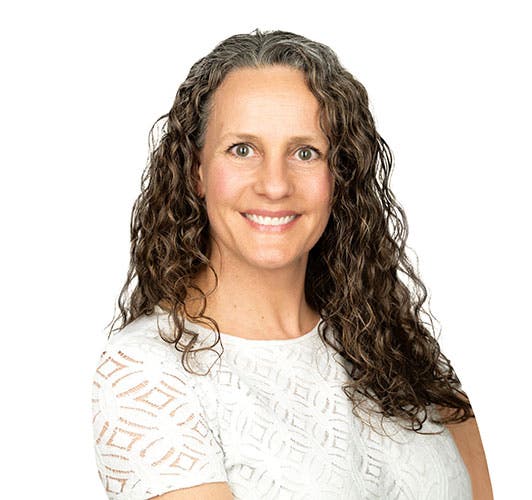This last year has been incredibly hard, but the future looks a little brighter. With the number of vaccinations increasing significantly every day, and the CDC’s new guidance on how kids can safely return to school, there is a real reason to be hopeful that we are heading toward better times, and into our long anticipated “new normal.”
For those of us in the cleaning industry, the future presents us with another glimmer of hope. The pandemic brought to light the importance of cleaning, not only for aesthetics and building preservation, but also for health. In fact, it can be argued that the public had very little knowledge and appreciation of cleaning for health prior to the pandemic. Hundreds if not thousands of articles have been written about cleaning for health, and terms like “disinfecting” and “contact time” (also called “dwell time” or “wet time”) are now household words.

This public awareness has spilled over into the commercial cleaning industry, and businesses have adapted to ensure they are addressing their customer’s concerns and desires for cleaner environments. As a result, the focus on cleaning has increased and I don’t know about you, but as a consumer and public health professional, I LOVE where we are heading. Gone are the days of grimacing every time I need to pump gas or put my pin number into one of those retail or gas station keypads. We have COVID-19 to thank for this new awareness, and I do not want to go back!
But with progress comes reflection, and it is important to recognize that, while we’ve come a long way, we are not done yet. While “disinfecting” and “contact time” may be household words, there are still far too many accounts of misinformation and inappropriate cleaning practices. Some examples include:
- The use of the term “sanitize” to address SARS-CoV-2 (the virus that causes COVID-19) on surfaces. This is inappropriate because sanitizers are not EPA-registered to kill viruses.
- Reports of spraying and immediately wiping to disinfect without waiting the contact time are common. In the keypad example, if an EPA-registered disinfectant wasn’t used, or if the contact time wasn’t met, we cannot be sure that the aesthetically clean keypad was disinfected.
- The internet is full of pictures of the incorrect use of electrostatic sprayers intended for use on surfaces, by inappropriately spraying them into the air. Cleaning companies are expending resources to disinfect surfaces that no one even touches and are not considered higher-risk for germ transmission.
Not only are these examples problematic from a resource perspective, but they have caused many to question the true value of cleaning, leading to concerns about “Hygiene Theater.”
Clearly, there is more work to do. If we want to see the positive changes from COVID-19 continue post-pandemic, we must prioritize correcting the misinformation and inappropriate practices. Here is what I recommend:
- Optimize surface hygiene — Instead of spraying everything, focus cleaning and disinfecting efforts ONLY on shared and commonly touched surfaces that are responsible for spreading germs. While sometimes called targeted disinfection, at CloroxPro, we call this “Smart Disinfection.” Since we know that there are real world limitations – additional staffing needed on top of existing cleaning staff for instance, CloroxPro has great tools (see here and here) to help you prioritize the higher risk areas in your facility. If you still do not have the cleaning staff to clean and disinfect the higher risk areas, one option is to recruit building occupants to help do the work. Employees can help clean in workplaces, teachers can help clean in schools, and clinical staff can help clean in healthcare facilities.
- Increase access to education and training — Cleaning for health takes knowledge and skill. The more training employees have, the better they will be able to do their jobs. Increased training increases job satisfaction, provide cleaners with confidence that they are experts at what they do, and helps them understand why their jobs are important to the greater good. If recruiting building occupants to help, do not forget to train them too. This will not only teach them about the proper use of cleaning products, but it will also open their eyes to some of the rigors of daily cleaning and disinfecting.
- Emphasize Personal Responsibility — This goes for everyone, not just cleaning staff. We all need to get better at washing our hands, coughing into our elbow, staying home when sick, getting vaccinated, and wearing PPE when appropriate. Policies and procedures can go a long way to ensuring that staff and building occupants minimize the spread of germs. Document and train on these policies and procedures, and then be sure to audit for compliance regularly to make sure they are followed.
- Keep Communicating! — As COVID-19 fades, so likely will the public’s focus on cleaning for health. Many years of evidence tells us this will happen, as human interest always spikes with the fear and then declines with the relief. Our job as cleaning professionals is now to stay in the limelight, in a positive way. To do this, we need to continue to spread the word about the importance of cleaning for health, what needs to be true to achieve it, and how to do it responsibly (e.g. SMART Disinfection). We need to keep sharing that cleaning for health is based in science, that it takes knowledge, skill, practice, and that that the people doing the work and the processes they follow are just as important as the great products they are using.
COVID-19 is not the first pandemic, and it certainly will not be the last. Many public health professionals are already working on advocating for better preparedness because it is clear now that the lack of preparation was, at least in part, the cause of so much devastation. The cleaning industry can also help prepare, starting with remaining vigilant with the progress we have made. Yes, we have made great progress, but our journey to be as good as we can be is not quite over yet.
For help with preparing for the New Normal, including the area risk assessment tool I mentioned above, please visit our website: https://www.cloroxpro.com/resource-center/preparing-for-the-new-normal/.
“Never a doubt that a small group of thoughtful committed citizens can change the world. Indeed, it’s the only thing that ever has.” ~Margaret Mead


